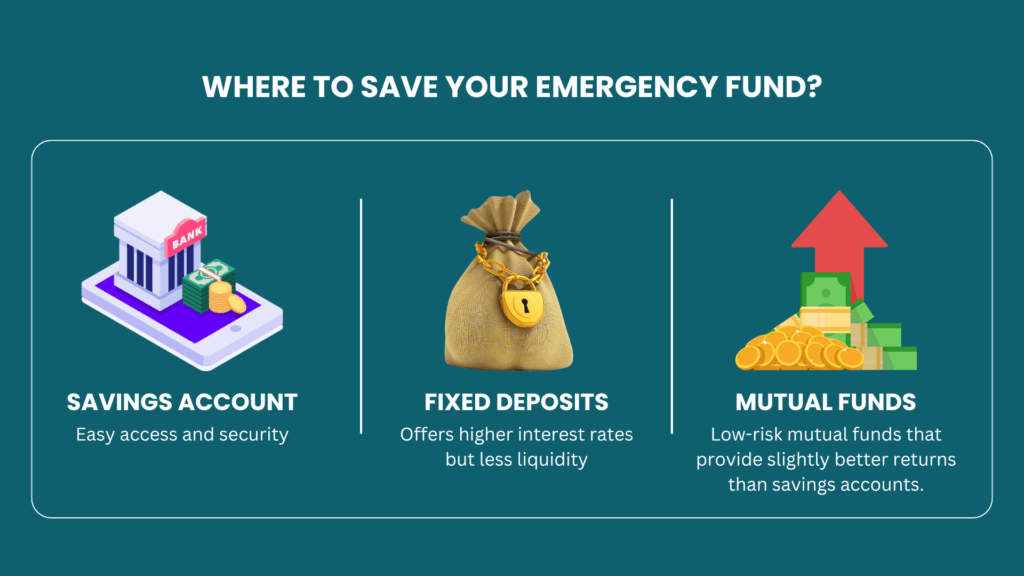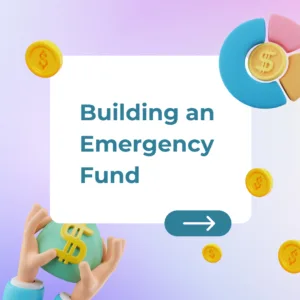Life is unpredictable, and unexpected expenses can disrupt your financial stability. Building an emergency fund is essential to handle emergencies like medical bills, car repairs, or job loss. The good news? You can create an emergency fund quickly with smart strategies.


Let’s explore how to get started and achieve this financial milestone.
Why Do You Need an Emergency Fund?
An emergency fund is your safety net during financial crises. It:
- Prevents you from relying on high-interest loans.
- Protects long-term investments by avoiding early withdrawals.
- Gives peace of mind by providing financial security.
Steps to Build an Emergency Fund Quickly
1. Set a Clear Goal
Decide how much you need in your emergency fund. A general rule is to save at least 3–6 months’ worth of expenses. For a faster start, aim for one month’s worth initially.
Example:
If your monthly expenses are ₹25,000, start with ₹25,000 as your short-term goal.
2. Create a Budget
Track your income and expenses to identify areas where you can cut costs. A budget ensures you allocate funds effectively toward your emergency fund.
Key Tip: Use budgeting apps like Axio or Mint to simplify tracking.
3. Automate Savings
Set up automatic transfers to a dedicated savings account. By automating, you save without thinking, reducing the temptation to spend.
Pro Tip: Choose a high-yield savings account for better interest rates.
4. Cut Non-Essential Spending
Analyze your discretionary expenses and cut back where possible.
- Skip dining out frequently.
- Limit streaming service subscriptions.
- Opt for cost-effective travel options.
5. Leverage Windfalls
Use unexpected money like bonuses, tax refunds, or cash gifts to boost your emergency fund. Instead of splurging, channel these funds into your savings.
Example:
Got a ₹10,000 bonus? Add it to your emergency fund and watch it grow.
6. Take Up a Side Hustle
Explore part-time jobs, freelance gigs, or selling unused items. A side hustle can accelerate your savings without impacting your primary income.
Popular Ideas:
- Freelancing (writing, graphic design).
- Driving for ride-sharing services.
- Selling handmade crafts on Etsy or Instagram.
7. Avoid Debt and Unnecessary Loans
Debt repayments can hinder your savings journey. Focus on clearing high-interest debts before aggressively saving for emergencies.
8. Use the 50/30/20 Rule
Allocate your income wisely:
- 50% for essentials.
- 30% for discretionary spending.
- 20% for savings (emergency fund included).
9. Start Small but Stay Consistent
Even small amounts add up over time. Consistency is more important than the size of your deposits.
Example:
Saving ₹200 daily will accumulate ₹6,000 by the end of the month.
10. Track Your Progress
Review your savings regularly to stay motivated. Use visual aids like charts or apps to monitor growth.
Additional Tips for Faster Fund Growth
- Sell unused items online to add to your savings.
- Participate in cashback or rewards programs and transfer earnings to your fund.
- Use tax-saving instruments to save on expenses and direct the difference to your fund.
Where Should You Keep Your Emergency Fund?


- Savings Account: Easy access and security.
- Fixed Deposit (FD): Offers higher interest rates but less liquidity.
- Liquid Funds: Low-risk mutual funds that provide slightly better returns than savings accounts.
Conclusion
Building an emergency fund is not just about saving money but creating financial resilience. Start with a clear goal, budget smartly, and use every opportunity to save. Remember, consistency and discipline are key. With these strategies, you’ll have your emergency fund ready quickly. This will give you the confidence to face life’s uncertainties head-on.




